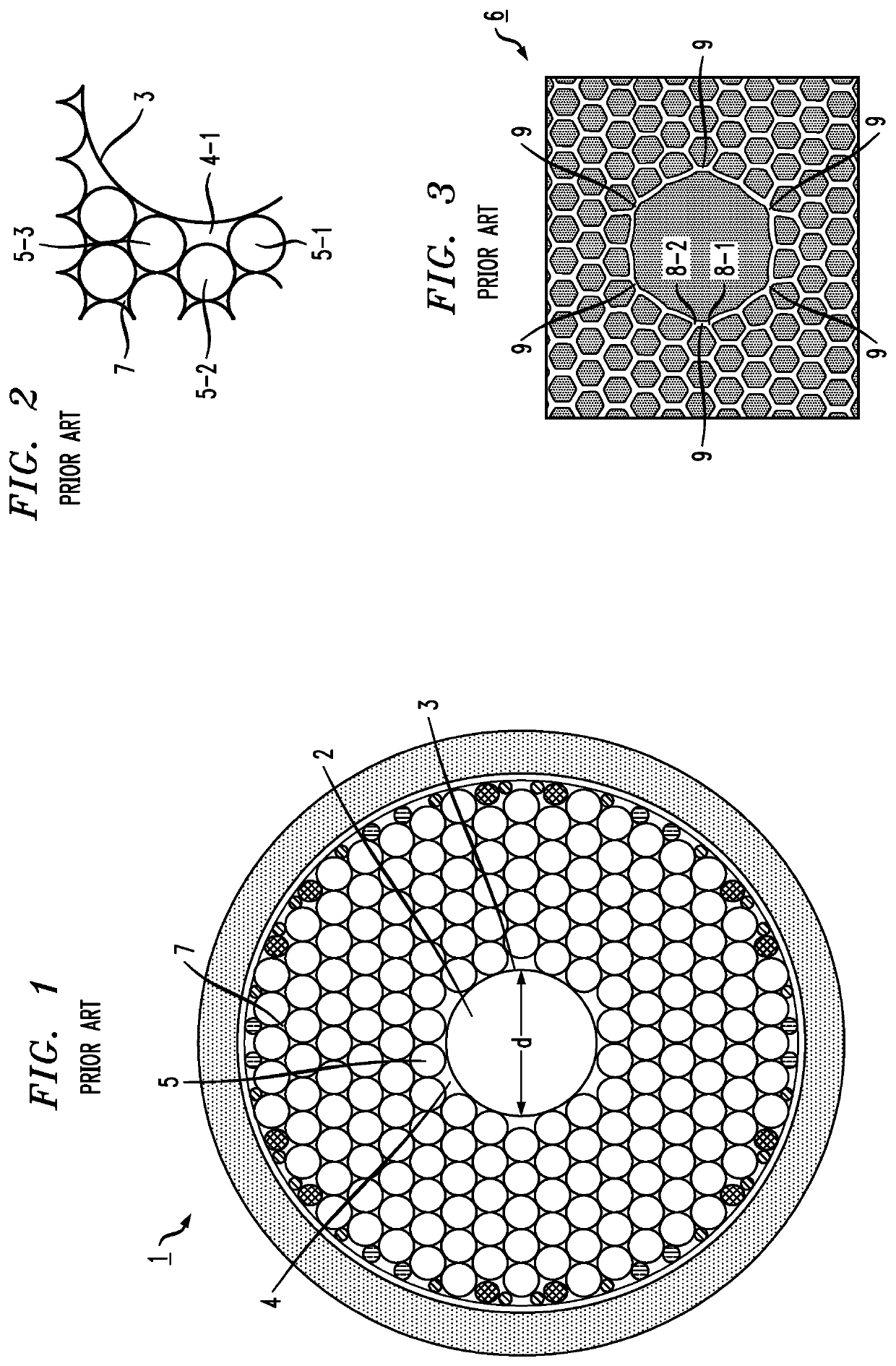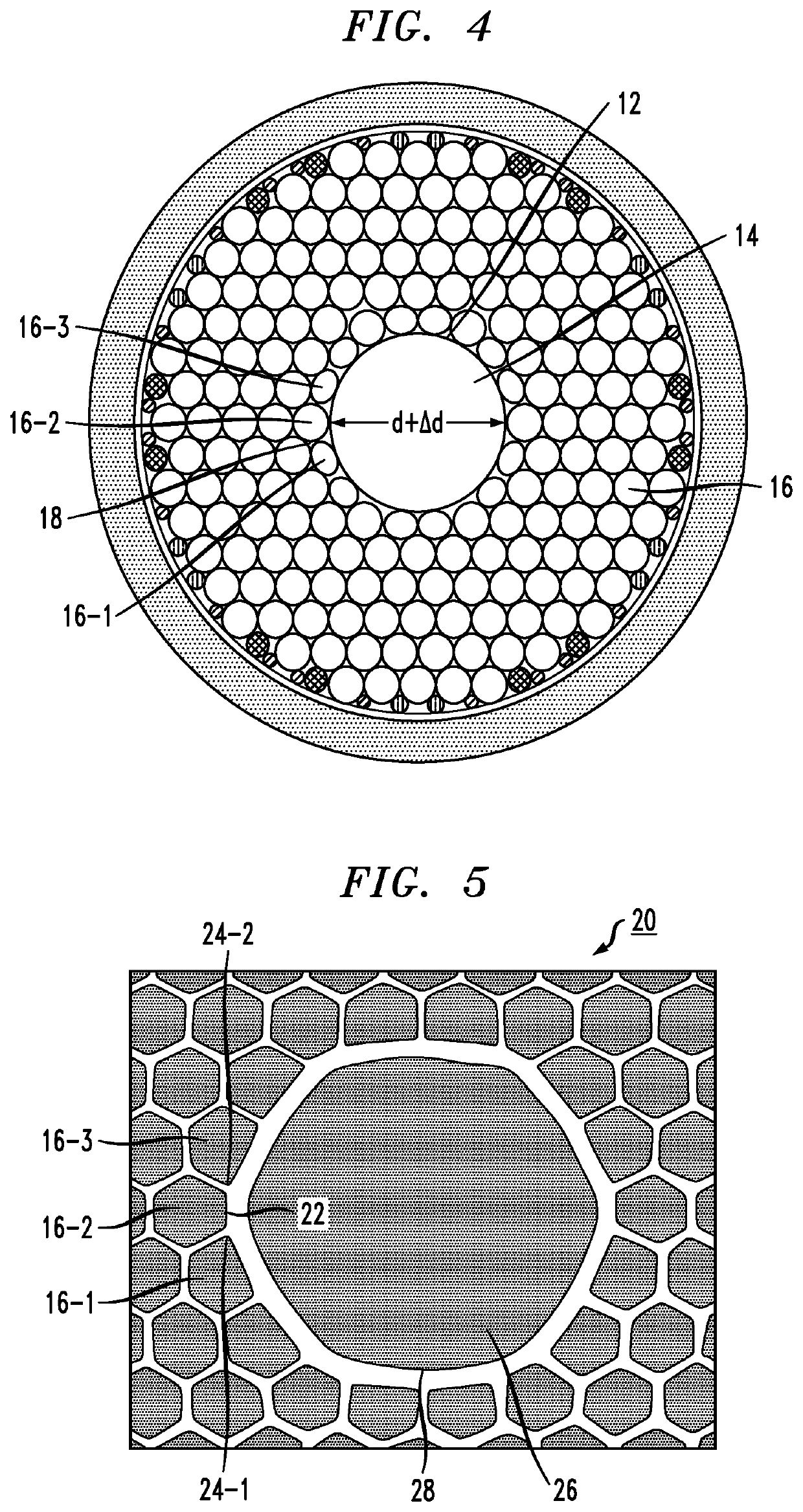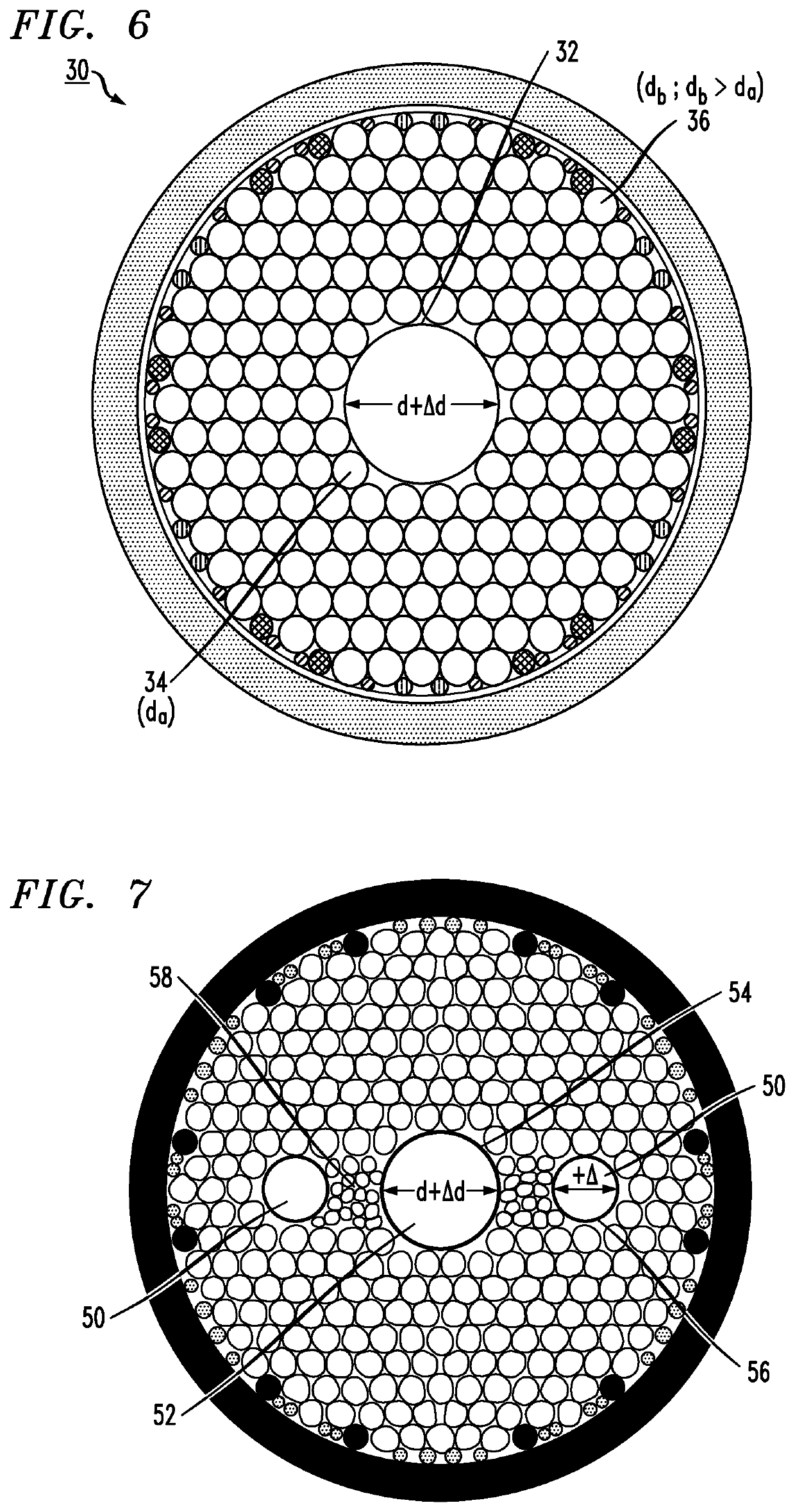Hollow Core Optical Fiber And Method Of Making The Same
- Summary
- Abstract
- Description
- Claims
- Application Information
AI Technical Summary
Benefits of technology
Problems solved by technology
Method used
Image
Examples
Embodiment Construction
[0022]An assembly of various capillary tubes and glass rods used to form a conventional hollow core optical fiber is shown in the prior art illustration of FIG. 1. The capillary tubes are represented as open circles and the rods (disposed around the outer periphery of the assembly) are represented as closed (filled-in) circles. In this particular assembly 1, a set of nineteen capillary tubes has been removed from the central area to define a hollow core region 2. A core tube 3 is inserted within this space and is used to support the structure during subsequent draw processes so as to maintain an open (hollow) core region 2. As shown in FIG. 1, core tube 3 does not completely fill the periphery of hollow core region 2, with interstitial spaces 4 remaining at various locations between core tube 3 and those capillaries 5 immediately adjacent to core tube 3. FIG. 2 is an enlargement of a portion of the structure shown in FIG. 1, clearly illustrating selected interstitial spaces 4 at the...
PUM
| Property | Measurement | Unit |
|---|---|---|
| Fraction | aaaaa | aaaaa |
| Fraction | aaaaa | aaaaa |
| Fraction | aaaaa | aaaaa |
Abstract
Description
Claims
Application Information
 Login to View More
Login to View More - R&D
- Intellectual Property
- Life Sciences
- Materials
- Tech Scout
- Unparalleled Data Quality
- Higher Quality Content
- 60% Fewer Hallucinations
Browse by: Latest US Patents, China's latest patents, Technical Efficacy Thesaurus, Application Domain, Technology Topic, Popular Technical Reports.
© 2025 PatSnap. All rights reserved.Legal|Privacy policy|Modern Slavery Act Transparency Statement|Sitemap|About US| Contact US: help@patsnap.com



